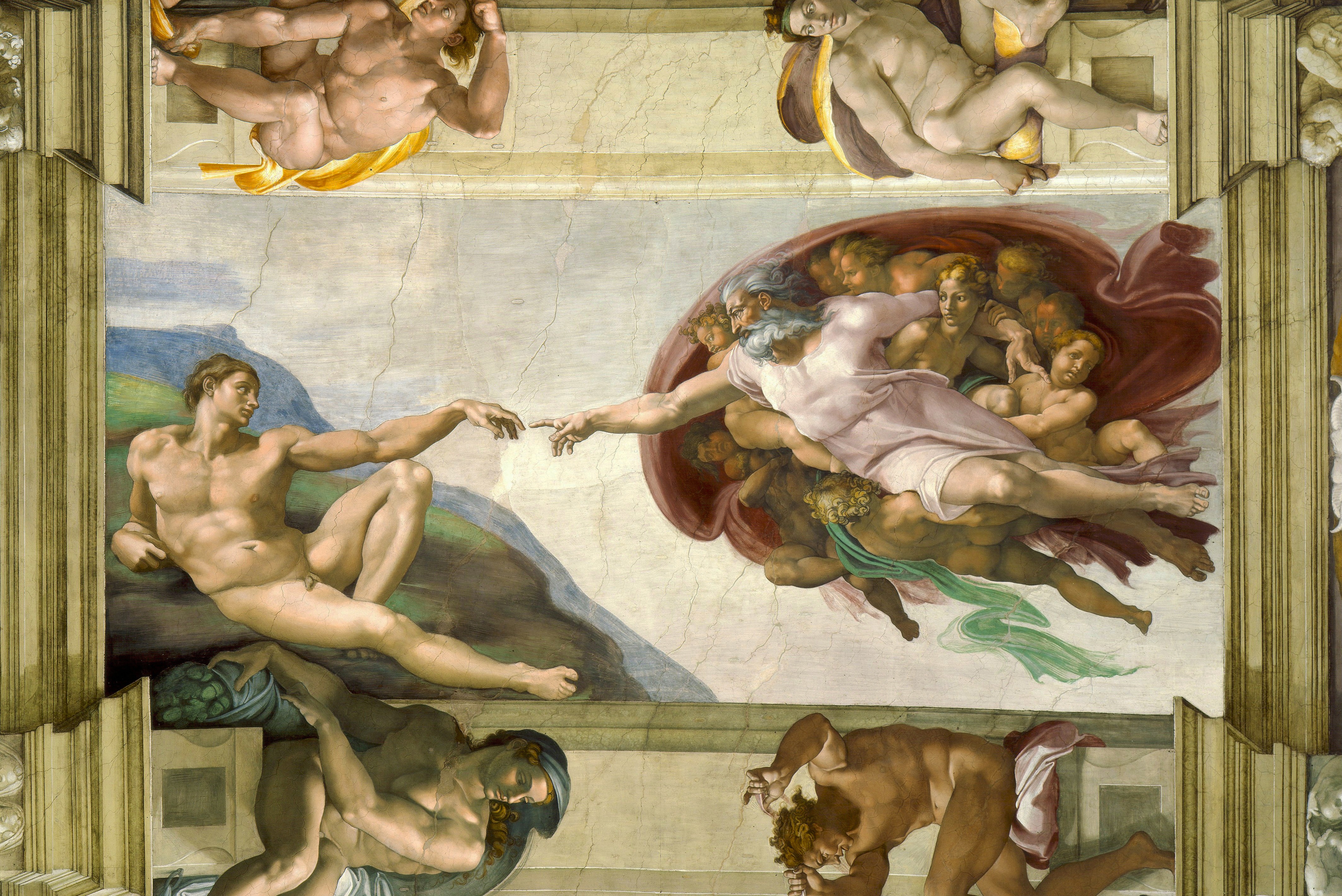Also see:
Ceiling and its Significance
The ceiling is mostly covered in fresco figures usually in nudes and one remarkable aspect is that they feel like sculptures and less like paintings. Since Michelangelo was a sculptor, his expertise in sculpture seems to translate very elegantly in to his paintings. All the figures have a massiveness and presence. A key characteristic of his paintings was that they both exude the feeling of strength as well as elegance.

The main feature in the ceiling is the series of nine scenes that are spread in the center of the painting and these scenes are bordered by painted architectural framework that seems very real. The series starts with the first scene of the creation of the world in which a Godly figure is shown to be separating light from the darkness. Then follows the creation of the sun, moon and the planets followed by the separation of the land from the sea. Next is the creation of Adam which is a very significant piece of work and is followed by creation of Eve and thus the creation of human race. Then follows "Temptation and Expulsion" which depicts the fall, or the separation of good and evil, followed by the scenes of Noah. All these scenes are from the first book of the Bible, the Book of Genesis. This demonstrates that Michelangelo was a devout Catholic.
Interestingly, the ceiling does not have any paintings of Christ, even though the Sistine Chapel is a catholic church. Instead, these scenes symbolize the onset of Christ. Such as the disobedience and expulsion of Adam and Even symbolized a need for Christ, and on the sides outside the painted architectural framework, there are paintings of prophets and Sybils that predicted the coming of a savior.

The Libyan Sybils painted on the sidesare pagan soothsayers. These figures have a presence of drama and strength. Even though the Sybil is a woman, the muscles on the arms and the back are visible, which obviously indicates that a male model was used. In conclusion, the ceiling is not one simple painting. Instead it is a complex stage where paintings of various scenes from the Book of Genesis create a story and different levels of reality. For example, around the genesis scenes are male nude figures, around which are the Libyan Soothsayers, thus visually creating complex layers of reality. There is a large difference between this painting, which he completed in 1512 and his painting of the last Judgment that seems to have a more pessimistic view of the world. The ceiling shows the optimism and the new-formed elegance of the art form in the early Rennaissance period.
After the completion of the ceiling in the Sistine Chapel, Michelangelo went back to Florence and after two decades, returned to Rome to work on the Last Judgment. His second undertaking at the Sistine Chapel was met with much admiration along with a lot of scandal. The significance of the ceiling of Sistine Chapel is tremendous in the legacy of art and culture.